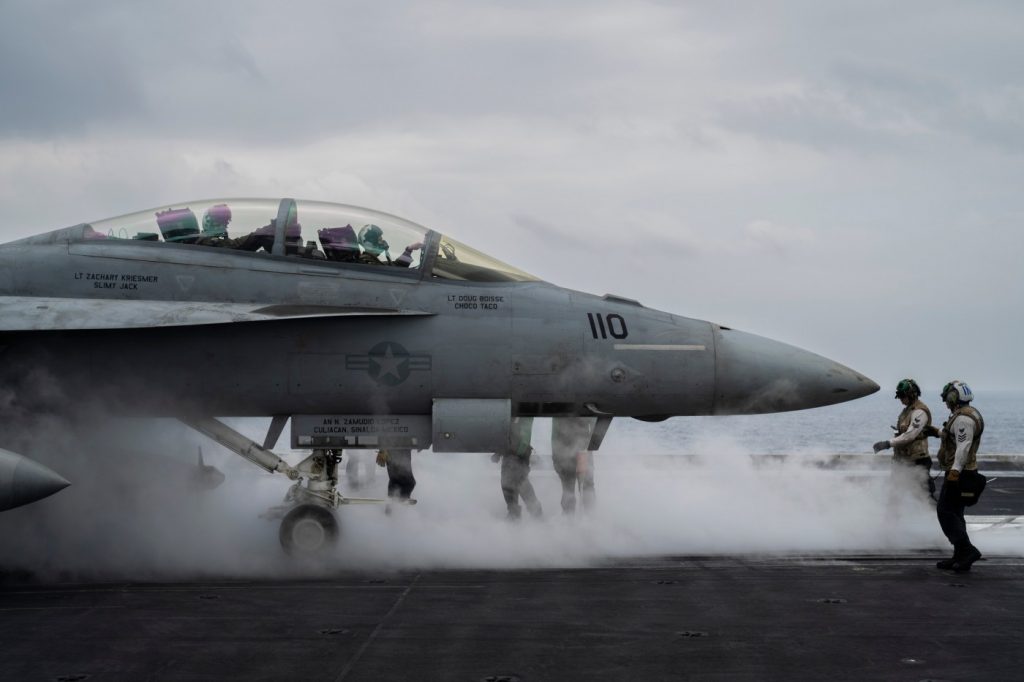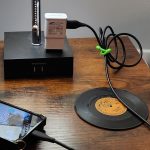By Bernat Armangue and Tara Copp | Associated Press
ABOARD THE USS DWIGHT D. EISENHOWER — Sailors aboard the aircraft carrier USS Dwight D. Eisenhower and its accompanying warships have spent four months straight at sea defending against ballistic missiles and flying attack drones fired by Iranian-backed Houthis, and are now more regularly also defending against a new threat — fast unmanned vessels that are fired at them through the water.
While the Houthis have launched unmanned surface vessels, or USVs, in the past against Saudi coalition forces that have intervened in Yemen’s civil war, they were used for the first time against U.S. military and commercial vessels in the Red Sea on Jan. 4. In the weeks since, the Navy has had to intercept and destroy multiple USVs.
It’s “more of an unknown threat that we don’t have a lot of intel on, that could be extremely lethal — an unmanned surface vessel,” said Rear Adm. Marc Miguez, commander of Carrier Strike Group Two, of which the Eisenhower is the flagship. The Houthis “have ways of obviously controlling them just like they do the (unmanned aerial vehicles), and we have very little little fidelity as to all the stockpiles of what they have USV-wise,” Miguez said.
The Houthis began firing on U.S. military and commercial vessels after a deadly blast at the Al-Ahli hospital in Gaza on Oct. 17, a few days after the outbreak of the Israel-Hamas war. The rebels have said they will continue firing on ships transiting the region until Israel ceases its military operations inside Gaza.
The Eisenhower has been on patrol here since Nov. 4, and some of its accompanying ships have been on location for even longer, since October.
In those months the Eisenhower’s fleet of fighter and surveillance aircraft has worked non-stop to detect and intercept the missiles and drones fired by the Houthis at ships in the Red Sea, Bab el-Mandeb Strait and Gulf of Aden. The carrier’s F/A-18 fighter jets are also frequently launched to take out missile sites they detect before munitions are fired.
As of Wednesday, the carrier strike group — which includes the cruiser USS Philippine Sea, the destroyers USS Mason and Gravely, and additional U.S. Navy assets in the region, including the destroyers USS Laboon and USS Carney — has conducted more than 95 intercepts of drones, anti-ship ballistic missiles and anti-ship cruise missiles and made more than 240 self-defense strikes on more than 50 Houthi targets.
On Thursday, U.S. Central Command reported that the strike group had intercepted and destroyed seven additional anti-ship cruise missiles and another explosive USV prepared to launch against vessels in the Red Sea.
A commercial vessel in the Gulf of Aden reported a suspected Houthi attack, and the crew and ship were able to safely continue their journey after an explosion occurred near the ship, the United Kingdom Maritime Trade Operations center reported. Houthi military spokesman Brig. Gen. Yahya Saree later claimed the attack, asserting without evidence that the rebels’ missiles struck the vessel. He identified the targeted vessel as the Barbados-flagged bulk carrier Lycavitos, owned by the British firm Helikon Shipping. The company declined to comment.
“We are constantly keeping an eye on what the Iranian-backed Houthis are up to, and when we find military targets that threaten the ability of merchant vessels, we act in defense of those ships and strike them precisely and violently,” said Capt. Marvin Scott, commander of the carrier air wing’s eight squadrons of warplanes.
But the USV threat, which is still evolving, is worrisome, Miguez said.
“That’s one of the most scary scenarios, to have a bomb-laden, unmanned surface vessel that can go in pretty fast speeds. And if you’re not immediately on scene, it can get ugly extremely quick,” Miguez said.
U.S. Central Command also reported Thursday that the U.S. Coast Guard cutter Clarence Sutphin Jr. boarded a vessel in the Arabian Sea that was bound for Yemen on Jan. 28 and seized medium-range ballistic missile parts, explosives, USV components and military-grade communications equipment.
The ships have spent four months at a constant combat pace with no days off with a port call. That takes a toll on sailors, the commander of the Eisenhower, Capt. Christopher “Chowdah” Hill, said in an interview with The Associated Press aboard the Eisenhower.
The ship keeps up morale by letting sailors know how important their job is and by giving them Wi-Fi access so they can stay connected with their families back home.
Related Articles
Iran blames sabotage for natural gas pipeline explosion
Raid on Rafah rescues 2 Israelis being held by Hamas
Houthi rebels attack ship bound for Iran, their main supporter
Israeli strikes kill 13 in southern Gaza town of Rafah
Strike in Baghdad kills militia leader linked to attack on US troops
“I was walking through the mess decks the other day and I could hear a baby crying because someone was teleconferencing with their infant that they haven’t even met yet,” Hill said. “It’s just extraordinary, that sort of connection.”
The destroyers don’t have Wi-Fi because of bandwidth limitations, which can make it harder for those crews.
Joselyn Martinez, a second class gunner’s mate aboard the destroyer Gravely, said not being in touch with home and being in a fighting stance at sea for so long has been hard, “but we have each other’s backs here.”
When a threat is detected, and an alarm sounds directing the crew to respond, “it is like a rush of adrenaline,” Martinez said. “But at the end of the day, we just do what we come here to do and, you know, defend my crew and my ship.”
Armangue reported from onboard the Eisenhower and Gravely. Copp reported from Washington. Associated Press writer Jon Gambrell in Dubai, United Arab Emirates, contributed to this report.


